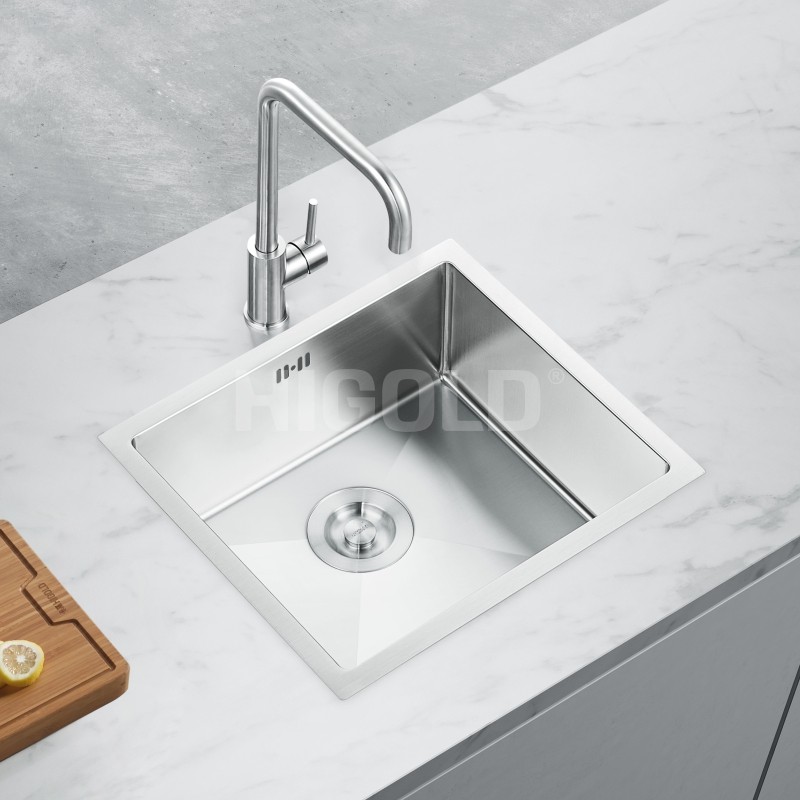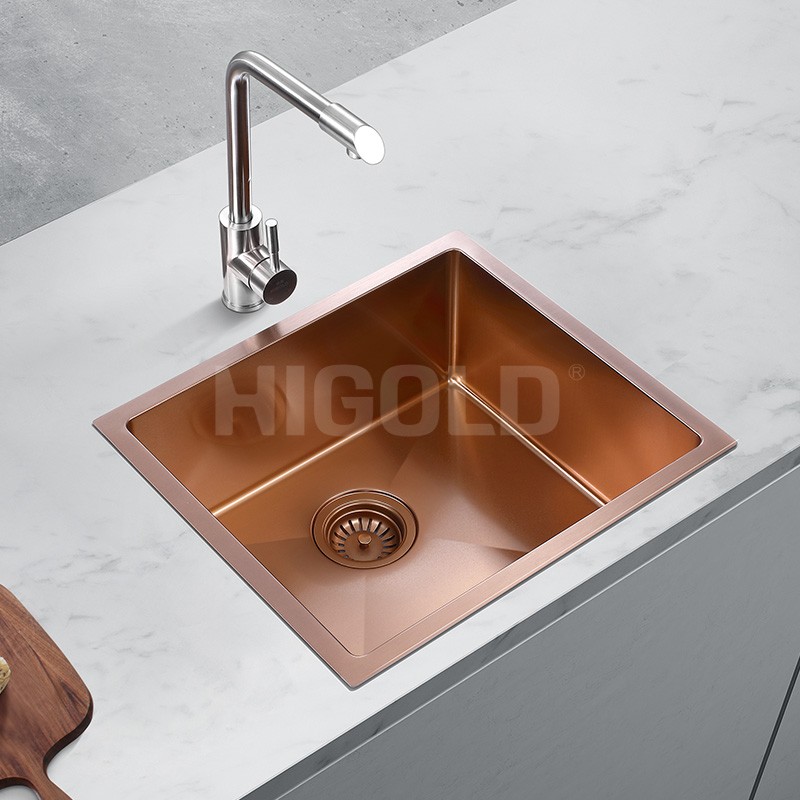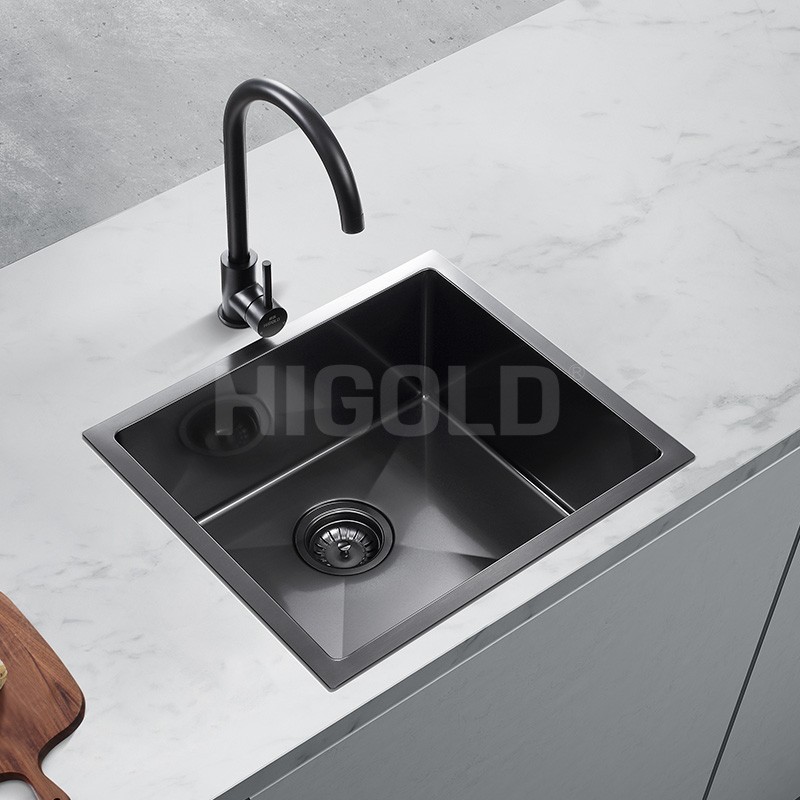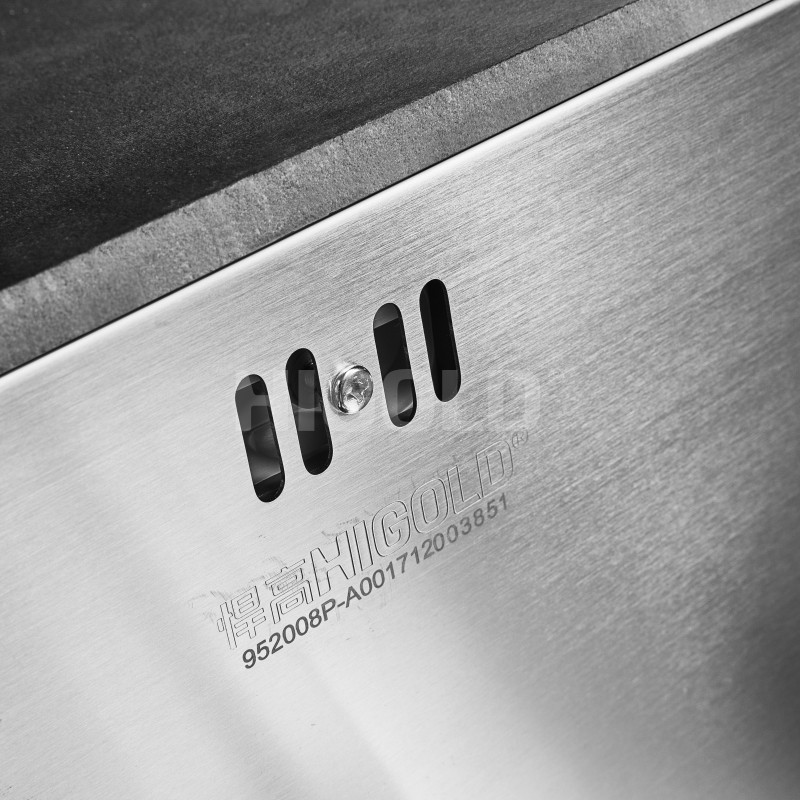In modern kitchen design, undermount kitchen sinks have become the first choice for many home and commercial kitchens due to their clean, modern appearance and efficient use. Compared with traditional top-mounted sinks, undermount kitchen sinks have a unique installation method, with the edge hidden under the countertop, which can provide a cleaner appearance and easier cleaning. However, an important question about undermount kitchen sinks is how much weight they can bear. This question is directly related to the durability, safety and stability of the sink in daily use.
In this article, we will take a deep look at the load-bearing capacity of undermount kitchen sinks, analyze the factors that affect their load-bearing capacity, and provide consumers with suggestions for selecting and maintaining undermount sinks. We will focus on the material, structure, installation method and use of undermount kitchen sinks to discuss its load-bearing capacity.

What are undermount kitchen sinks?
Undermount kitchen sinks refer to sinks whose edges are installed below the countertop, instead of traditional top-mounted sinks. There is almost no gap between the edge and the countertop, and the sink and the countertop are integrated. The design of undermount kitchen sinks visually brings a simple and smooth feeling to the kitchen, while also making it easier to clean the sink. Since the edge of the undermount sink is hidden under the countertop, it becomes easier to clean the seam between the sink and the countertop.
This design allows the gravity of the sink to act mainly on the countertop, rather than relying solely on the support of the bottom of the sink. During the installation of undermount sinks, installers usually use glue, screws or other supports to fix the sink under the countertop to ensure its stability.
What are the common materials of undermount kitchen sinks?
Undermount sinks are made of a variety of different materials, including stainless steel sinks, composite quartz sinks, granite sinks, and ceramic sinks. Each material has different performance in terms of load-bearing capacity.
● Stainless steel sinks: Stainless steel sinks are the most common type of undermount sinks. The hardness and toughness of the material are high, and they can withstand greater weight and pressure. Due to the different thickness and materials of stainless steel sinks, their load-bearing capacity also varies.
● Composite quartz sink: Made of quartz particles mixed with resin, composite quartz sinks are usually harder, more durable, and more impact-resistant than stainless steel sinks. They can withstand heavy weights and are suitable for daily kitchen use.
● Granite sink: Granite sinks are known for their durability and hardness and can withstand heavy weights, but they are brittle and easily damaged by severe impacts. Granite sinks usually have a higher load-bearing capacity, but you also need to be careful to avoid impacts from sharp objects.
● Ceramic sink: Ceramic sinks have a beautiful appearance and a smooth surface, but they are hard and brittle. Although ceramic sinks can withstand a certain amount of weight, they are brittle and may break or crack when subjected to excessive impact.

How much weight can undermount kitchen sinks withstand?
The load-bearing capacity of undermount kitchen sinks is closely related to their material, structural design, and installation method. Generally speaking, undermount sinks have a stronger load-bearing capacity than traditional top-mounted sinks, but the specific load-bearing capacity is still affected by many factors.
1. The influence of undermount sinks material on load-bearing capacity
The material of undermount sinks is one of the key factors that determine their load-bearing capacity. Sinks of different materials have different physical properties, so their performance in load-bearing is also different.
●Stainless steel sinks: Stainless steel undermount sinks can usually bear a large weight, especially high-quality stainless steel sinks, whose thickness and toughness can ensure that the sink will not be deformed or broken due to the pressure of heavy objects in daily use. Most stainless steel sinks are 0.6 mm to 1.2 mm thick, and there is no problem in bearing the weight of regular kitchen operations.
●Composite quartz sinks: Composite quartz undermount sinks are usually composed of 80%-90% quartz and 10%-20% resin, with very high compressive resistance and hardness. This material sink performs well in load-bearing and can withstand heavier items. The common thickness of composite quartz sinks is between 1.5 cm and 2 cm, which is enough to cope with normal pressure in the kitchen.
●Granite sinks: Granite undermount sinks have relatively high hardness and compression resistance, but they are also more brittle. Although they can withstand a certain amount of weight, if they are subjected to excessive impact, especially by sharp objects, they may cause cracks in the sink. Therefore, although granite sinks are durable, special attention should be paid to avoid severe external impact.
●Ceramic sinks: Ceramic undermount sinks have high hardness, but they are more brittle and have relatively weak load-bearing capacity. If they are compressed by heavy objects or subjected to severe impact, the sink may crack. Ceramic sinks are suitable for daily use, but for extremely heavy objects, they may not be as durable as sinks made of other materials.
2. Sink thickness and load-bearing capacity
The thickness of undermount sinks directly affects their load-bearing capacity. Generally, the thicker the sink, the stronger its load-bearing capacity. For example, the thickness of stainless steel sinks is usually 0.6 mm to 1.2 mm. Thicker stainless steel sinks can withstand greater weight, especially stainless steel sinks with a thickness of more than 1 mm, which can withstand strong pressure.
For composite quartz undermount sinks, thickness is also an important factor affecting their load-bearing capacity. Generally speaking, thicker composite quartz sinks can better bear weight, but it is also possible that the brittleness of the sink will increase due to the excessive thickness of the material. When choosing a composite quartz sink, consumers should consider the thickness and load-bearing capacity of the sink to ensure its long-term stable use.
3. The impact of installation method on load-bearing
The installation method of undermount sinks also plays a vital role in their load-bearing capacity. Since the edge of the sink is installed under the countertop, the weight of the sink is mainly supported by the countertop. If the material of the countertop is soft or not durable, the sink may not get enough support, causing the sink to deform or loosen due to the excessive weight.
In addition, when installing undermount sinks, it is necessary to use a suitable support system to ensure that the sink is fixed firmly. Some high-end undermount sinks use strong fixing methods such as metal brackets and glue to enhance the stability of the sink and prevent the sink from loosening or deforming during long-term use. Therefore, the installation method of undermount sinks and the material of the countertop are crucial to the load-bearing capacity of the sink.

Weight capacity of undermount kitchen sinks in daily use
1. Weight capacity in normal kitchen operations
In most home kitchens, the daily use of undermount sinks mainly includes operations such as washing dishes, vegetables and food preparation. According to actual needs, the weight that the sink usually bears does not exceed a few kilograms. Such weight does not cause too much pressure on undermount sinks, so almost all undermount sinks can withstand these weights in normal use.
2. Placing heavy objects and avoiding excessive pressure
Although undermount sinks have a relatively strong load-bearing capacity, users still need to avoid placing heavy objects directly in the sink. For example, try to avoid placing heavy kitchen utensils or large pots directly into the sink when using the sink, especially in stone or ceramic sinks, which may be damaged by the pressure of heavy objects.

Buy Customized Stainless Steel Sinks and Faucets
If you're looking customized for kitchen sinks and faucets, Higold Group provides the perfect solution. We specialize in both ODM and OEM manufacturing, offering personalized designs and product specifications to match your business needs. Our stainless steel products are made with the highest standards in mind, ensuring long-lasting durability and top-tier performance. With over 500 patents and international certifications, Higold is your trusted supplier. Contact us for customized solutions and bulk order quotes!


